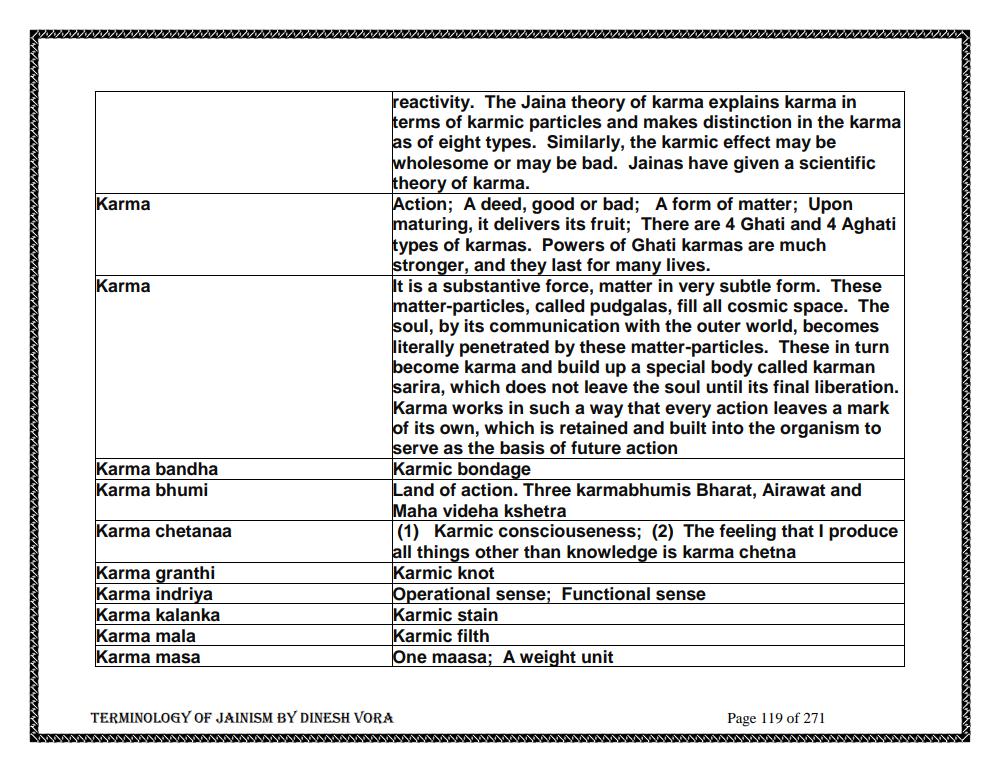________________
Karma
Karma
Karma bandha Karma bhumi
Karma chetanaa
Karma granthi
Karma indriya Karma kalanka
Karma mala
Karma masa
reactivity. The Jaina theory of karma explains karma in terms of karmic particles and makes distinction in the karma as of eight types. Similarly, the karmic effect may be wholesome or may be bad. Jainas have given a scientific theory of karma.
Action; A deed, good or bad; A form of matter; Upon maturing, it delivers its fruit; There are 4 Ghati and 4 Aghati types of karmas. Powers of Ghati karmas are much stronger, and they last for many lives.
It is a substantive force, matter in very subtle form. These matter-particles, called pudgalas, fill all cosmic space. The soul, by its communication with the outer world, becomes literally penetrated by these matter-particles. These in turn become karma and build up a special body called karman sarira, which does not leave the soul until its final liberation. Karma works in such a way that every action leaves a mark of its own, which is retained and built into the organism to serve as the basis of future action
Karmic bondage
Land of action. Three karmabhumis Bharat, Airawat and Maha videha kshetra
(1) Karmic consciouseness; (2) The feeling that I produce all things other than knowledge is karma chetna
Karmic knot
Operational sense; Functional sense
Karmic stain
Karmic filth
One maasa; A weight unit
TERMINOLOGY OF JAINISM BY DINESH VORA
Page 119 of 271




